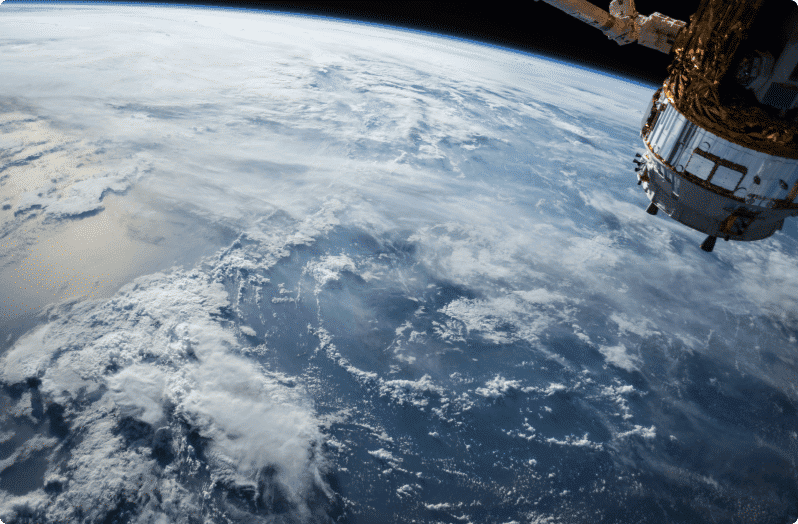
Understanding the layers of the atmosphere: A comprehensive guide

Prasad Gollakota
20 years: Capital markets & banking
The Earth's atmosphere is a remarkable blanket of gases that envelops our planet, providing us with the air we breathe and regulating our climate.

Much is known about the ozone layer and its depletion but the ozone layer exists within only one of five layers in our atmosphere.
Our atmosphere is divided into five distinct layers, each with its own set of unique characteristics and traits. From the troposphere, where weather phenomena occur, to the exosphere, where the merge with outer space begins, these layers play a crucial role in sustaining life on Earth and influencing global climate patterns. The atmosphere is composed of roughly 78% nitrogen, 21% oxygen, and 1% other gases such as argon, carbon dioxide, neon, helium, and methane.
It’s important to understand how these layers interact with each other and how our way of life is changing the make-up of the atmosphere. In this Insight, we'll explore each layer, highlighting their characteristics, functions, and how climate change impacts each part differently.
1. Troposphere:
The troposphere is the layer closest to the Earth's surface, extending approximately 8 to 14.5 kilometers above sea level. This is where all weather phenomena, such as clouds, rain, and storms, occur. It is also the layer in which most conventional aviation activity takes place.
The troposphere contains approximately 75% of the atmosphere's mass, due to the weight of the rest of the atmosphere’s layers above it. Within this layer, temperatures decrease with altitude, leading to the convection currents that drive weather patterns. This layer is thinnest at the North and South Pole, and thickest around the tropics.
Greenhouse gas emissions, global warming and climate change in general affect the troposphere by intensifying weather patterns, leading to more frequent and severe storms, heatwaves, and precipitation events.
In recent years, the increased warming of our planet has led to a fundamental change in the structure of the troposphere. In a study published in Science Advances, researchers found that the top of the troposphere has been rising by about 50-60 meters (about 165-195 feet) per decade.
They attribute the expansion to warming temperatures near Earth’s surface that cause the lowest layer of the globe’s atmosphere to rise. This change in the troposphere can have knock-on effects for outer layers.

2. Stratosphere:
Above the troposphere lies the stratosphere, reaching up to about 50 kilometers above the Earth's surface and is most well known for being home to the ozone layer. The stratosphere plays a critical role in Earth's climate and environmental health because of the actions of the ozone layer.
The ozone layer acts as Earth's sunscreen, absorbing and scattering the solar ultraviolet radiation that can be harmful to life forms, protecting ecosystems and human health. Without this protective layer, the planet would be exposed to higher levels of UV radiation. The ozone layer was depleting rapidly until the 1987 United Nations Environment Programme (UNEP) Montreal Protocol came into existence. This protocol mandated that every nation in the world cease production and consumption of ozone-depleting substances (ODS) to aid in healing the hole created in the layer, which was first discovered in 1985.
The UN reported in January 2023 that the ozone layer is on track to make a full recovery as a result of the Protocol.
As there are no weather events or mixing of the air in this layer, heavy air sits at the bottom of the layer while lighter and warmer air lies at the top. Climate change impacts the stratosphere by influencing the distribution and concentration of ozone, leading to ozone depletion. This, in turn, can increase the risk of skin cancer, alter atmospheric circulation patterns, affect weather systems and negatively impact marine ecosystems and terrestrial plant life.
In a study published in the journal, Environmental Research Letters, researchers found greenhouse gas emissions have contributed to the thickness of the stratosphere shrinking by 400 meters since the 1980s. The layer could potentially thin by another kilometre by 2080 if we continue to release emissions at the same rate we have done. This could impact satellite trajectories, space-based navigational systems, radio waves and orbital life-times.
In another UCLA-led study, researchers found that human-made causes have impacted the temperature of the stratosphere. They discovered that decreases in temperature in the layer over the past three decades have been caused by increased levels of greenhouse gas emissions. Higher amounts of greenhouse gas emissions trap heat in the troposphere, the layer of the atmosphere below the stratosphere.
According to the study, this has caused a cooling of the stratosphere, with temperature changes being 12 to 15 times greater than what could have been caused by nature.
3. Mesosphere:
The mesosphere extends from the top of the stratosphere to about 85 kilometers above the Earth's surface. It is the coldest layer of the atmosphere, with temperatures in the mesosphere decreasing with altitude, reaching as low as -90°C (-130°F) at its upper boundary. Think of this layer as a protective sheet around the Earth as this is where most meteors burn up upon entering the atmosphere, creating mesmerising meteor showers.
In the mesosphere, the thin air and low temperatures contribute to phenomena such as noctilucent clouds, also known as night shining clouds, the highest clouds in Earth’s atmosphere. These clouds are formed by ice crystals that condense on dust particles at altitudes of around 80 km, and are visible from the ground under certain conditions near twilight.
Climate change can indirectly impact the mesosphere by altering the composition of the atmosphere and influencing temperature patterns. In a study published in the Journal of Atmospheric and Solar-Terrestrial Physics, researchers found that the mesosphere has been slowly cooling and contracting for decades as a result of human activity, specifically the rise of greenhouse gas emissions. The researchers analysed data from three NASA satellites, studying about 30 years worth of data.
According to the study, the summer mesosphere over Earth’s poles is on the track of cooling by 4-5°F, or about -15°C, and contracting 500 to 650 feet per decade. This also has the potential to impact satellite drag and trajectories.

4. Thermosphere:
Located above the mesosphere, the thermosphere extends to about 600 kilometers above the Earth's surface. It plays a crucial role in Earth’s climate system by acting as a barrier that absorbs a significant amount of solar radiation, preventing it from reaching the surface. This absorption causes temperatures to soar, potentially exceeding 2,500°C, with the increase in altitude.
Despite these high temperatures, the thermosphere would not feel hot to a human in direct contact due to its extremely low density; there are simply not enough gas molecules to effectively transfer heat.
The thermosphere houses the ionosphere, spanning it and the mesosphere below. This layer is vital for radio and GPS technology, created by ionisation where solar rays strip electrons from atoms, forming a zone of charged particles. These particles enable the ionosphere to reflect and bend radio waves, supporting long-distance communication by bouncing radio signals back to Earth.
Auroras are another feature of the thermosphere. These natural light displays occur when charged particles from the Sun, carried toward Earth by the solar wind, collide with the gases in the thermosphere. These collisions energise the gas molecules, which then release photons as they return to their ground state, emitting light that we observe as auroras.
Climate change affects the thermosphere by altering the distribution of gases and increasing temperatures, leading to changes in atmospheric drag and satellite orbits.
5. Exosphere:
The exosphere is the outermost layer of the Earth's atmosphere, gradually merging with outer space. It consists of sparse gas molecules and extends to about 10,000 kilometers above the Earth's surface. The temperature in the exosphere ranges widely and can be anywhere from 0 to 1700 degrees celsius.
This layer of the atmosphere is important because it allows light gases like hydrogen to escape Earth's gravity into space. It also interacts with solar wind particles, leading to the geocorona, a faintly glowing halo around Earth made up of hydrogen atoms that shine in ultraviolet light when they absorb and release energy from the sun.
This layer is primarily composed of extremely thin air and hydrogen, helium, and other light gases and particles that can escape into space. However, the particles within it are so sparse that they can travel hundreds of kilometres without colliding with one another. This condition makes the exosphere more like outer space than an atmospheric layer. It is here that satellites orbit the Earth, and the layer's low density means there is little atmospheric drag, allowing satellites to orbit for extended periods without significant decay in their orbits.
While climate change has minimal direct impact on the exosphere, it indirectly influences this layer by affecting lower layers and altering the composition and dynamics of the atmosphere as a whole.
Understanding the layers of the atmosphere is crucial for comprehending Earth's climate system and the impacts of climate change. Each layer plays a vital role in regulating our climate, and any disruption can have far-reaching consequences. As we continue to witness the effects of climate change, it's essential to prioritise efforts to mitigate its impacts and preserve the delicate balance of our atmosphere for future generations. By studying and protecting each layer, we can strive towards a sustainable future for our planet and all its inhabitants.

Prasad Gollakota
Share "Understanding the layers of the atmosphere: A comprehensive guide" on





















